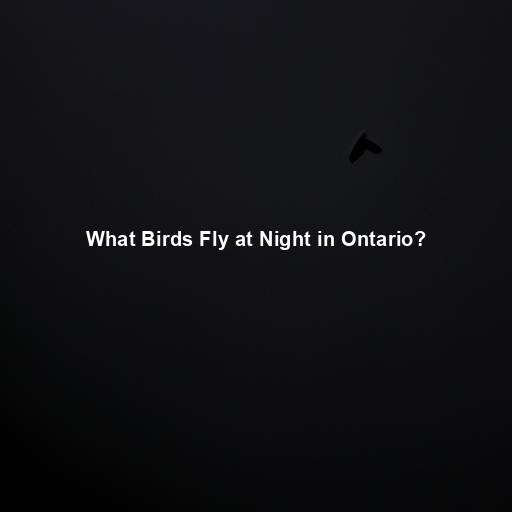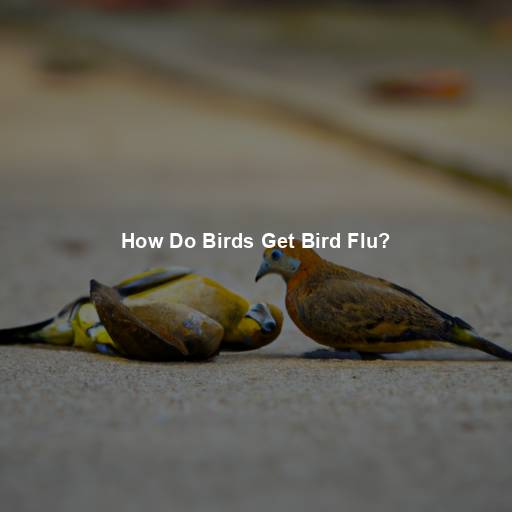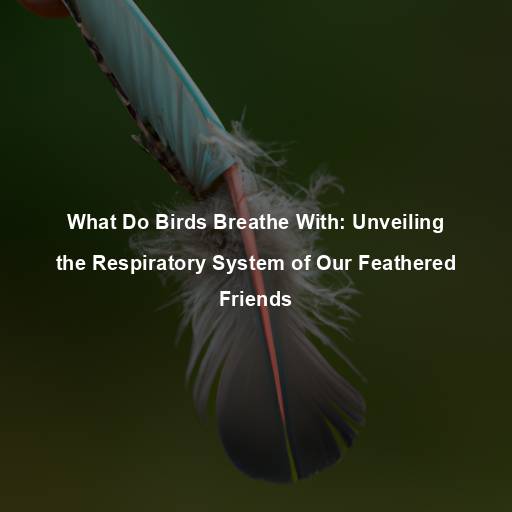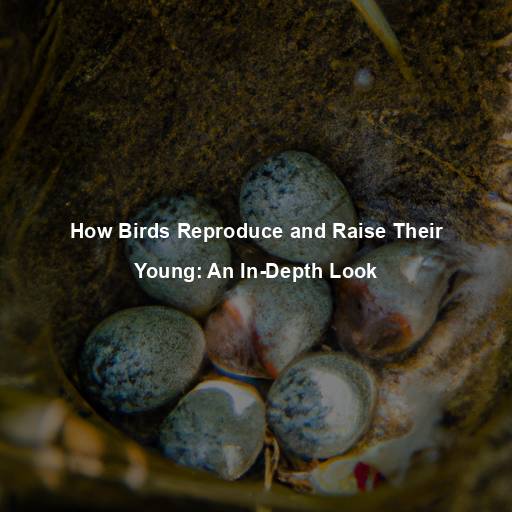What Birds Fly at Night in Ontario?
Last Updated on November 14, 2023 by Evan
Contents [hide]
- 1 Nocturnal Birds in Ontario: A Fascinating World Unveiled
- 1.1 The Remarkable Great Horned Owl
- 1.2 The Charming Eastern Whip-poor-will
- 1.3 The Mysterious Common Nighthawk
- 1.4 The Elusive Barred Owl
- 1.5 The Majestic Northern Saw-whet Owl
- 1.6 The Nighttime Wanderer: American Woodcock
- 1.7 The Graceful Night Heron
- 1.8 The Serenading Eastern Screech-Owl
- 1.9 Calling in the Dark: Nocturnal Vocalizations
- 1.10 Hoots, Trills, and Whistles
- 1.11 Whips and Chirps
- 1.12 Booms and Peents
- 1.13 Croaks and Squawks
- 1.14 Navigating the Dark: Adaptations for Nocturnal Flight
- 1.15 Night Vision Superpowers
- 1.16 Silent Flight
- 1.17 Keen Hearing
- 1.18 Feathers and Camouflage
- 2 Pioneers of the Night: Ontario’s Nocturnal Birds
- 3 A Nighttime Adventure Awaits
- 4 FAQs – What Birds Fly at Night in Ontario
- 4.1 What are some birds that fly at night in Ontario?
- 4.2 Why do birds fly at night in Ontario?
- 4.3 How do birds navigate at night in Ontario?
- 4.4 Are all birds that fly at night in Ontario owls?
- 4.5 How can I attract nocturnal birds to my backyard in Ontario?
- 4.6 Are there any endangered nocturnal bird species in Ontario?
Nocturnal Birds in Ontario: A Fascinating World Unveiled
Ontario is a mesmerizing place, where the vast and diverse natural landscapes create a stage for an extraordinary array of bird species. During the day, these enchanting creatures mesmerize us with their vibrant colors and melodious songs as they take to the skies. However, as darkness descends upon the province, a bewitching transformation unfolds, revealing a cast of nocturnal birds that grace the night with their presence. In this article, we embark on a journey to uncover the secrets of Ontario’s nocturnal birds – mysterious beings that navigate the nocturnal realm with unparalleled grace and skill.
The Remarkable Great Horned Owl
As twilight descends upon the vast lands of Ontario, a mystical creature emerges, captivating the hearts and minds of many. With its haunting hoots resonating through the night, the Great Horned Owl commands attention with its mesmerizing yellow eyes, filled with a wisdom that seems otherworldly. Its ability to navigate effortlessly through the darkest of nights is nothing short of extraordinary, thanks to its remarkable night vision. This majestic predator, with its piercing gaze and elongated talons, hunts with an elegant silence, offering a burst of perplexity as it preys upon a diverse array of creatures, from rabbits to rodents, and even daring enough to challenge fellow avian brethren.
The Charming Eastern Whip-poor-will
Step into the mystical world of Ontario’s nighttime symphony, where an alluring song cast by the Eastern Whip-poor-will permeates the air. As darkness descends, this remarkable bird emerges, shrouded in a cloak of secrecy. Its cryptic feathers, a mesmerizing patchwork of earthy browns and inky blacks, seamlessly meld with the forest’s tapestry. Behold its nocturnal mastery as it gracefully snatches its prey, agilely maneuvering through the moonlit sky, feasting upon a gastronomic delight of airborne insects, the moth and beetle among its enthralling menu.
The Mysterious Common Nighthawk
As the sun sets and the world slips into shadow, a mysterious creature unfolds its wings and takes flight. Introducing the enigmatic Common Nighthawk, a winged wonder that defies categorization. Don’t let its name fool you – this captivating creature belongs to the intriguing Caprimulgidae family. With its slender physique, expansive wingspan, and striking white wing patches, the Common Nighthawk is a true marvel as it embarks on nocturnal expeditions, skillfully snatching insects mid-flight.
The Elusive Barred Owl
In the depths of Ontario’s forests, the Barred Owl silently glides through the night, its haunting hoots echoing in the darkness. This medium-sized owl is renowned for its distinctive barred plumage and dark, soul-piercing eyes. Unlike some other owl species, the Barred Owl is not strictly nocturnal but is most active during the twilight hours and in the early morning. Its diet consists mainly of small mammals, such as mice and voles, and occasionally includes birds and amphibians.
The Majestic Northern Saw-whet Owl
The diminutive Northern Saw-whet Owl may be small in size, but its presence in Ontario’s nighttime skies is nothing short of majestic. With its captivating amber eyes and intricate feather patterns, this owl holds a special place in the hearts of bird enthusiasts. Contrary to its size, the Northern Saw-whet Owl is a formidable hunter, preying on small rodents and occasionally capturing birds in its razor-sharp talons. Its soft, high-pitched toots and trills add a magical ambiance to the nocturnal symphony of Ontario.
The Nighttime Wanderer: American Woodcock
As the moonlight casts its gentle glow over Ontario’s damp woodlands and meadows, a mysterious performer emerges from the shadows. The American Woodcock, a plump and enigmatic bird with its distinctive long bill, defies the restful nature of its avian counterparts. With a burst of energy, it takes flight, captivating spectators with an elaborate aerial dance that seems to blend poetry and madness. Up into the night sky it soars, tracing delicate patterns against the stars before descending in a graceful spiral, almost as if caught in a perplexing cosmic spell.
The Graceful Night Heron
Ontario’s wetlands and marshes come alive at night with the graceful presence of the Night Heron. These medium-sized herons, including the Black-crowned Night Heron and the Yellow-crowned Night Heron, are expert hunters in low-light conditions. With their stealthy movements and sharp beaks, they search for fish, amphibians, and crustaceans, securing their meal with swift precision. The Night Heron’s distinctive calls, resembling a series of croaks or squawks, can be heard resonating through the wetland habitats of Ontario after dusk.
The Serenading Eastern Screech-Owl
As twilight blankets Ontario’s forests, a mysterious creature awakens – the Eastern Screech-Owl. Contrary to its name, this enchanting bird surprises us with its diverse repertoire of calls, from gentle trills to delicate hoots, evoking a sense of wonder in the night. What truly captivates is the owl’s uncanny ability to vanish into its surroundings, as if becoming one with the very trees it perches on. In its quest for sustenance, this pint-sized predator preys upon unsuspecting mammals, insects, and even fellow avian companions, playing a vital role in upholding the delicate harmony within Ontario’s intricate ecosystems.
Calling in the Dark: Nocturnal Vocalizations
Nocturnal birds in Ontario not only navigate the night skies but also fill the air with a symphony of calls and vocalizations. These unique sounds serve various purposes, including establishing territory, attracting mates, and communicating with other members of their species. Let’s explore the fascinating world of nocturnal bird calls and the significance they hold.
Hoots, Trills, and Whistles
As darkness falls, the eerie calls of the Great Horned Owl pierce the silence, signaling its dominance and quest for love amidst the shadows. Each owl boasts its own unique melodic hooting, fostering a sense of familiarity and identity in their realm. Meanwhile, the Eastern Screech-Owl adds its own captivating touch to the symphony of the night, serenading potential partners with a captivating chorus of trills and whinnies, while also using its vocal prowess to safeguard its territorial boundaries. In the realm of the avian world, communication takes on a mesmerizing form, as these winged creatures confound and astonish with their array of calls and sounds.
Whips and Chirps
As twilight descends upon the forest, a mysterious melody of nature unfolds. The Eastern Whip-poor-will takes center stage, enchanting its surroundings with a chorus that is as captivating as it is perplexing. With every “whip-poor-will” call echoing through the ancient trees, the males proclaim their presence and assert their dominance, all in pursuit of love and partnership. From dusk till dawn, this audio symphony weaves a tapestry of wonder, painting the night with a burst of hauntingly beautiful sound.
Booms and Peents
Male American Woodcocks engage in a fascinating courtship ritual known as the “sky dance”. As part of this display, they emit a distinct “peent” call while standing on the ground, followed by a series of low-frequency “booms” that resonate through the air as they ascend into the night sky. This performance not only attracts potential mates but also serves as a territorial announcement to other males.
Croaks and Squawks
Step into the mysterious world of Night Herons, where eerie croaks and enigmatic squawks reign supreme. These winged creatures, both the Black-crowned and Yellow-crowned varieties, possess a mesmerizing repertoire of vocalizations that transcend the boundaries of conventional communication. In the moonlit hours, as night descends upon the wetlands, the Night Herons unfurl their enchanting calls, weaving an intricate tapestry of sound that serves as a lifeline for their tight-knit colonies. Amidst the darkness, their ethereal symphony adds an air of intrigue to their graceful nocturnal foraging, leaving us captivated by their enigmatic ways.
Flying in the dark poses unique challenges for birds, requiring remarkable adaptations to ensure their safety and success. Nocturnal birds in Ontario have evolved several specialized features that enable them to navigate through the night with precision and efficiency. Let’s take a closer look at some of these adaptations.
Night Vision Superpowers
Nocturnal birds possess exceptional night vision, allowing them to navigate through dimly lit environments. Their eyes are highly sensitive to low levels of light, thanks to a high concentration of light-sensitive cells called rods. Additionally, their pupils dilate to capture as much available light as possible, enhancing their visual acuity in darkness. These adaptations enable nocturnal birds to spot potential prey and navigate through their surroundings with ease.
Silent Flight
In the realm of the moonlit skies, a mesmerizing secret lies in the realm of nocturnal birds – a mysterious adaptation that dances on the edge of our understanding. These enchanting creatures have unearthed a remarkable way to navigate the vast expanse of night without arousing suspicion. Through the evolution of specialized wing feathers adorned with delicate fringed edges, they have unlocked the power of silence in flight. Such a striking ability cloaks them with a cloak of stealth, enabling them to emerge as the epitome of predatory prowess.
Keen Hearing
In addition to their exceptional vision, nocturnal birds rely heavily on their acute sense of hearing to navigate and locate prey in the dark. Their asymmetrical ear openings, positioned at different heights on their heads, allow them to accurately pinpoint the source of sounds and determine the distance and direction. This auditory precision is vital for owls, such as the Great Horned Owl, as they rely on their hearing to detect small mammals scurrying beneath the snow or through vegetation.
Feathers and Camouflage
When darkness falls, nocturnal birds don their exquisite attire – an enigmatic display of patterns and hues that bewilder the senses. Their plumage acts as a spectral shield, skillfully blending into the ebony expanse of the night sky and the intricate tapestry of nature. Take the Eastern Whip-poor-will, adorned in a mesmerizing array of mottled browns and blacks, undulating like shadows dancing amidst the foliage, vanishing effortlessly from the scrutinizing gazes of both predator and prey. Their secret?
Pioneers of the Night: Ontario’s Nocturnal Birds
The Northern Flying Squirrel
Ontario’s enchanting realm of nocturnal beings holds a captivating secret: the Northern Flying Squirrel. These elusive creatures, though not avian in nature, possess an extraordinary trait that demands our attention. Picture this: a delicate patagium, a stretch of skin, unfurls between their limbs, enabling them to gracefully traverse the skies. With a single leap, they embark on fantastical journeys, spanning vast distances in their quest for nourishment or refuge from foes.
The Eastern Red Bat
Another fascinating nocturnal creature often mistaken for a bird is the Eastern Red Bat. These small, insectivorous bats are known for their vibrant reddish fur, making them easily distinguishable. They emerge at dusk and take to the skies, skillfully maneuvering through forests and meadows in search of flying insects. Eastern Red Bats have impressive echolocation abilities, emitting high-frequency sounds and using the echoes to locate and capture their prey.
A Nighttime Adventure Awaits
As day turns to night in Ontario, a hidden world of nocturnal birds and creatures comes to life. The enchanting melodies, unique adaptations, and captivating behaviors of these creatures add depth to the province’s rich biodiversity. Exploring the nocturnal realm allows us to appreciate the remarkable diversity of life and the intricate interconnections between species. So, venture into the darkness, armed with knowledge and a sense of wonder, and embrace the magic of Ontario’s nocturnal avian residents.
FAQs – What Birds Fly at Night in Ontario
What are some birds that fly at night in Ontario?
When the sun sets in Ontario, a mystical symphony of avian creatures begins to unfold. From the Great Horned Owl with its piercing eyes, to the Eastern Screech-Owl softly haunting the woods, and the Northern Saw-whet Owl silently gliding through the darkness, these nocturnal beings have mastered the art of nighttime survival. Joining them in the twilight realm are the Common Nighthawk, gracefully weaving through the dusky sky, and the American Woodcock, employing its exceptional low-light vision in its foraging pursuits. As the moon illuminates their ethereal world, these birds defy the constraints of daylight, captivating us with their enigmatic presence.
Why do birds fly at night in Ontario?
Have you ever wondered why birds take to the night skies? It’s not just a matter of convenience or whim, there’s actually a lot more to it! Take owls for instance, these nocturnal creatures have adapted to the darkness, using their specialized hunting skills to scour the nighttime landscape for their prey. By flying at night, they tap into a whole new world of active and plentiful food sources, giving them the upper wing in the game of survival. Moreover, when they spread their wings under the stars, they enjoy a peaceful meal without the usual daytime bird crowd vying for the same plate. It’s a clever way to maximize efficiency and minimize the risk of becoming someone else’s dinner.
As magical as the night sky itself, the ethereal beings known as nocturnal birds possess a mesmerizing array of adaptations that unravel the enigmatic mystery of their flight. Among their arsenal of celestial secrets, lies the enchanting art of celestial navigation, where stars and celestial cues become their guiding constellations in the dark abyss. These enigmatic creatures, equipped with eyes that shimmer with unspoken wisdom, harness the power of specialized compass systems, attuned to the very heartbeat of the Earth’s magnetic field. And yet, their nocturnal journey is not solely dependent on the cosmos; for within their souls, they carry the essence of familiar scents and the landmarks of their kindred, whispering secrets only they can decipher.
Are all birds that fly at night in Ontario owls?
Surprisingly, not every feathered creature that takes flight under the Ontario night sky can be classified as an owl, despite the popular notion. While owls have rightfully earned their reputation as expert nocturnal hunters, it is worth noting that they are not the sole participants in this captivating after-hours symphony. Among the avian cast that graces the darkness, one can find the elegant Common Nighthawk, a fascinating member of the nightjar family. In addition to the nighthawk, the enigmatic American Woodcock also takes center stage, a shorebird species that revels in twilight and nocturnal pursuits. While these captivating creatures may have contrasting hunting techniques and physical adaptations, they all share a unique prowess for navigating and capturing their prey in the mystical realm of diminished light.
How can I attract nocturnal birds to my backyard in Ontario?
To attract nocturnal birds to your backyard in Ontario, create a welcoming habitat. Planting native vegetation that provides food, shelter, and nesting sites will attract a variety of bird species. Install bird feeders and birdbaths, ensuring they are well-maintained and regularly stocked with appropriate food and clean water. Leave dead trees or snags standing, as they provide nesting sites and perches for birds. Additionally, minimize outdoor lighting during nighttime hours to reduce light pollution, which can disorient and disturb nocturnal birds.
Are there any endangered nocturnal bird species in Ontario?
Ontario, the secretive realm of endless wonder, holds within its borders a delicate dance of existence. Amongst its whispering forests and bewitching moonlit nights, silent sentinels of the sky reside. One such enigmatic creature is the Whip-poor-will, a species on the precipice of vanishing. Elusive and motionless, this majestic bird faces the relentless erosion of its habitat, the unfolding transformations of the very land it calls home. In this dance for survival, the protection of habitats becomes a vital refuge, a sanctuary for these fragile souls. Only through concerted efforts, the labor of love to safeguard and revive, and the gentle touch of collective consciousness can we preserve the ethereal presence of these nocturnal guardians.






